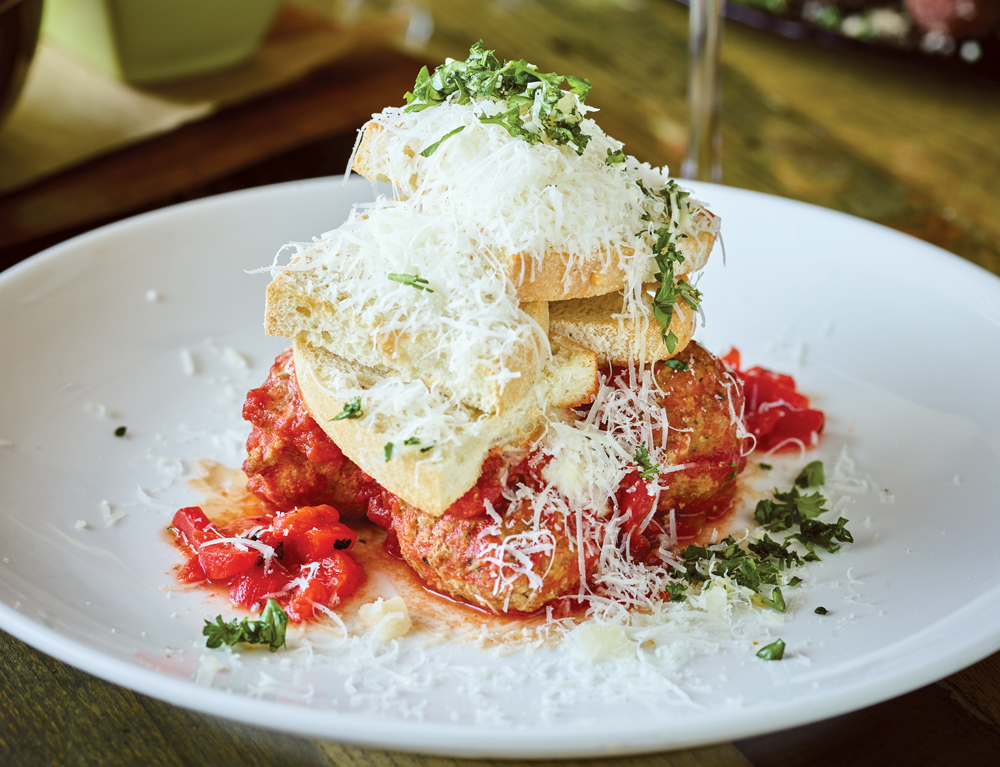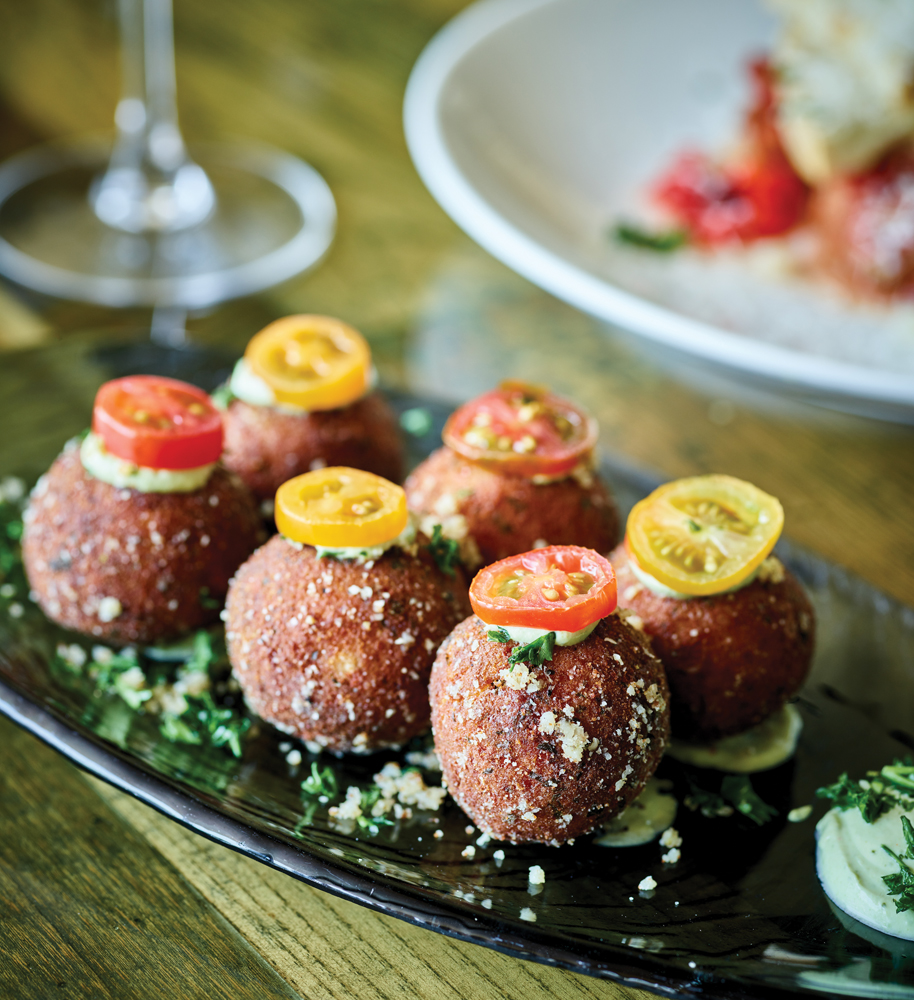
Testa Barra, the year-old contemporary Italian restaurant in Macomb Township, does everything just so â which is to say they do it right and with a plus-sign.
The food is all-around good, the service is pleasant and never officious, and the atmosphere is friendly, without being over the top.
Viewed through the wider lens of restaurant dining in the northeastern tier of metro Detroit, Testa Barra is a standout, and I highly recommend it.
Testa Barra is a project of the second generation of the Baldwin family, which, for years, has owned the signature J.Baldwinâs restaurant in Clinton Township. Founder Jeffrey Baldwin made his mark in the kitchens of some of Detroitâs big-name restaurants in the â80s and â90s, such as The Whitney and Van Dyke Place. He opened J.Baldwinâs in 2004.
J.Baldwinâs menu tends to defy any ethnic pigeon-holing â Italian, Spanish, California, New Orleans. It ranges the culinary landscape. More than a dozen years down the road, the Baldwins opened Testa Barra in the spring of 2017.

Jeffreyâs son, Jeffrey Jr., is the director of operations, and another son, Michael, is providing firepower as head chef in the kitchen. Michael is a 2014 graduate of the famous Culinary Institute of America in New Hyde Park, N.Y., along with his former classmate and fiancée, Gabriella Rodriguez.
Jeffrey Sr. is never far away, overseeing the back-of-the-house operations â and jumping in at the stove when needed, says family matriarch, Rose Baldwin (owner and director of marketing).
The idea of the restaurant came about when the family began considering ways to expand from the original J.Baldwinâs model.
âTesta Barra was a leaping-off point,â Rose explains. The name is a combination of her maiden name, Testa, and an island off the coast of Scotland named Barra.
Testa Barraâs menu is specifically Italian, and it has imported some of J.Baldwinâs highly popular Italian fare, such as the fried calamari and pizza lineup.

âItâs modern Italian cuisine of a type where you have deep flavors,â Rose says of the menu. âBut served in a modern way, with all kinds of elements from other places â like Sriracha or arrabbiata sauce, or ravioli with butternut with a vodka sauce.â

Testa Barra has a welcoming warm feel. The basic color palette of the walls is a greenish-yellow and gray, dotted throughout by the warm orange wood tones of the tables and chairs, while three high-top communal tables that can seat eight to 10 dominate the bar area.
To one side of the bar thereâs a garage-style roll-up door with window panes. Hugely popular nowadays with restaurants, it provides instant alfresco terrace dining in warmer weather, and adds a half dozen more four-seater tables in the busy times of a day.
Despite seeing several critical comments about Testa Barra online before our visit, we found nothing out of place, improperly prepared, plated, or served. It sometimes takes new restaurants a few months to settle in â to actually reach what it sets out to do and do it well. And after about 30 years of sniffing out good dining, I can say unequivocally that Testa Barra certainly has reached that level.
We began our dinner with a dish of what may well be the best arancini (fried risotto balls), Iâve had in recent memory. Two things made these stand out: the distinct cheesiness in the risotto and the addition of kale and prosciutto on the dish. The second starter was a plate of meatballs in a fresh light Marzano tomato sauce with a dab of herbed creamed ricotta sauce. The meatballs were a surprisingly delicate blend of pork, veal, and beef.

Other starters include the famous lightly seasoned JB Calamari with diced tomatoes, scallions, and capers in a lemon butter sauce; ravioli with speck and cheese, vanilla bean brown butter, squash, and sage; a fried, breaded Portobello mushroom with a parsley and red pepper aioli; an antipasto plate; and a Tuscan soup of sausage, potatoes, and kale.
Every once in a while, when I find myself in an Italian restaurant that really knows what itâs doing, I take advantage of it and pull the trigger on turning the meal into a traditional Italian dinner. That means starting with some small first courses, then inserting a second course pasta before moving up to a meat or fish dish, then ending with dessert and coffee.
When we told our server what we would like to do, he became confused. Apparently, itâs either not often done that way here, or he didnât know about it. But he quickly adjusted, bringing us a second course of terrific Strozzapreti Bolognese, the little long rolled pasta the name of which translates into âthe priest strangler.â It and all other pastas at Testa Barra are made in house.
After that lighter interval, we moved onto main courses. First up: an excellent traditional veal Saltimbocca â thin slices of veal sautéed with mushrooms and ham and served with a long thin tubular pasta tossed in cheesy creamy sauce.

Another main course well worth trying is Connieâs Lamb Shank (credited as âGreat Grandmaâs recipeâ). Itâs been braised in red wine, with tomatoes, vegetables, truffle, fingerlings, and shaved Parmesan.
One thing I particularly like about Testa Barra is the wine âprogramâ â specifically, the red wine program, which operates on two levels. The first is a routine wine list from which you pick a bottle. The second consists of a selection of 12 wines in three quantities: by the glass, by the quartino (a quarter bottle roughly,) or by the full bottle. Those 12 wines include a Tuscan blend, an Oregon pinot noir, a Chilean Malbec, an Italian merlot, and a California cabernet sauvignon. Glass prices range from $7-$14, quartino prices are $10-$18, and the full bottles $28-$55.
There has been a lot of change in that last few years in the fine dining scene all across the metropolitan area, most notably in the resurgence of a healthier more robust city of Detroit. It has attracted national media attention and many chef-owners have found large, good spaces at a fraction of the cost of suburban real estate. But in the focus on that excitement, we risk leaving behind new and deserving places in the suburbs. Testa Barra is very much worth that same kind of attention.
48824 Romeo Plank Rd., Macomb Township; 586-434-0100. D Tues.-Sat.; L&D Sun.
|
| Ìý |
|








